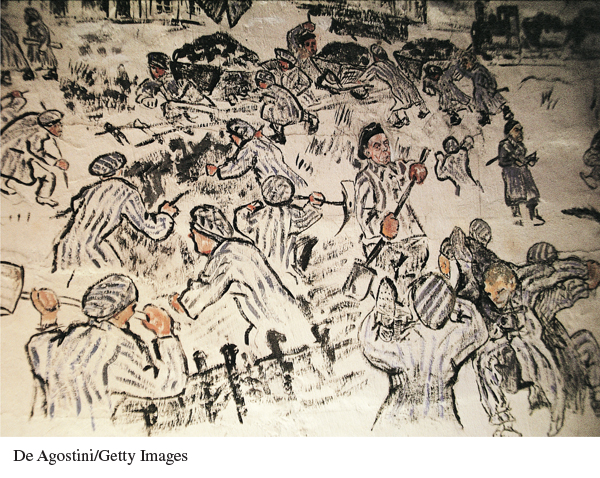AP® Period 4: Introduction
826-
AP® PERIOD FOUR
The Twentieth Century and Beyond
c. 1914 to the Present

826-
CHAPTERS
25 War and Revolution, 1914–1919
26 The Age of Anxiety, 1880–1940
27 Dictatorships and the Second World War, 1919–1945
28 Cold War Conflict and Consensus, 1945–1965
29 Challenging the Postwar Order, 1960–1991
30 Life in an Age of Globalization, 1990 to the Present
Pages 826-
The twentieth century was marked by wars of unprecedented scope and intensity that engulfed not only all of Europe but much of the world. Historians divide the century into smaller periods largely based on these wars: World War I (known to its survivors initially as the Great War), the interwar period, World War II, and the postwar era, marked for many decades by a cold war between former allies. In the summer of 1914 the nations of Europe went willingly to war, with both sides expecting a short war and certain victory. Instead the war was long, indecisive, and tremendously destructive, with extraordinary violence that shook certainties to their core and spread to many parts of the world. The peace settlement that ended the conflict was deeply flawed, and two decades later Europe and much of the world were at war again, in what would become the deadliest war in history. After the Second World War, Europe divided into a capitalist Western bloc and a Communist Eastern bloc, with each side building up a breathtaking supply of weapons and providing support for conflicts around the world. The collapse of communism in 1989 brought more representative government and a market economy to eastern Europe, though it also created difficulties. As the twenty-
826-